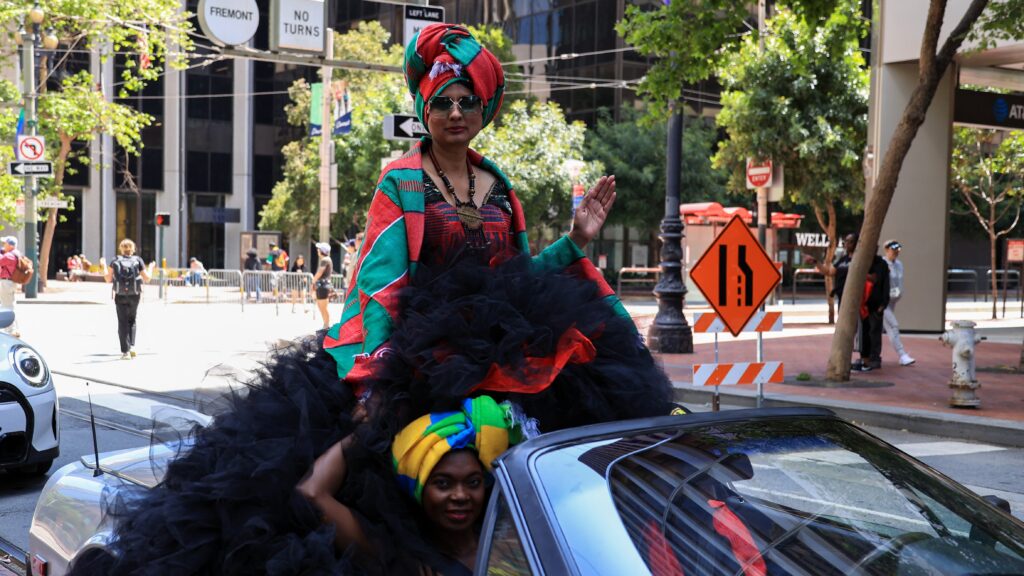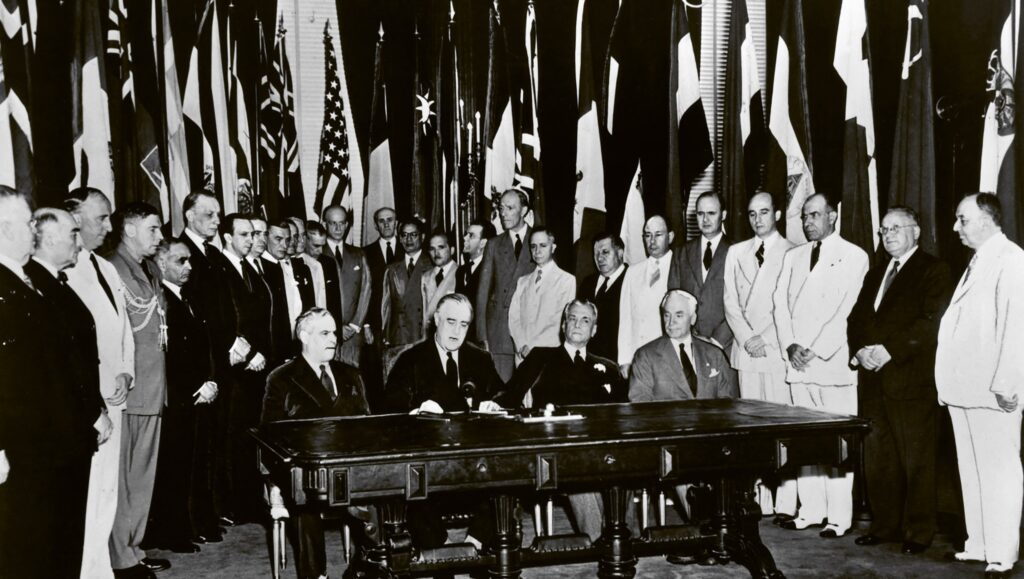Given the objectives of feminism, most women could identify with its fundamental causes; nevertheless, contemporary feminism still seems to push away the very people—women—it should rely on the most. Misandry, political lesbianism, and feminist separatism – while these are catchphrases of modern feminism, they describe very few women’s natural dispositions. How did feminism which was predicated on pursuing the equality of women disconnect from those it was supposed to serve? I went to America’s new university, the University of Austin (UATX), to attend a series of lectures by the British philosopher Kathleen Stock to learn more about the varieties and evolution of feminism to answer these questions.
First, a few words about the professor, Kathleen Stock. Until October 2021, Kathleen Stock was a professor of philosophy at the University of Sussex, when she was forced to resign due to the ongoing bullies and protests against her. While earlier she researched philosophical questions with regards to fiction and imagination, as trans ideology gained popularity on campuses she became famous (around four years ago) for opposing legally recognizing gender based on one’s self-identity. She recognizes that, for instance, biology also plays a part in the construction of one’s gender, and therefore, it is not entirely determined by one’s identification with one gender. To illustrate this point, consider a man who identifies as a woman, but has male genitalia. According to the activists pushing for legally recognizing self-identification, this man would need to be legally recognized as a woman, just because he said so. Whether this man is legally recognized as a woman or not has serious implications to everyday life. For instance, if this man (with male genitalia but female identity) is legally recognized as a woman then he is entitled to use women’s restrooms and in case he commits a crime (even if it is rape) he can be put into prisons for females. If, on the other hand, he is not legally recognized as a woman, he cannot use the women’s restrooms and cannot end up in prisons for women.
She recognizes that biology also plays a part in the construction of one’s gender, and therefore, it is not entirely determined by one’s identification with one gender
While objecting to legally recognizing self-identification sounds like a plausible argument, Kathleen Stock’s position was found outrageous on the Sussex campus. Protests and campaigns were launched against her at her university to force her to resign or otherwise intimidate her. For a few long years, she resisted the bullies. While the demonstrations against her sometimes stopped and sometimes intensified, last October they returned with a greater vice. Her workplace was yet again flooded with ‘Stock out’ posters and eventually, under great distress, she resigned. While the radical left hailed the event as a victory for transgender ideology which enchanted the safety of transgender people on campus, the right-wing media expressed its concerns about the loss of freedom of speech and the curtailment of academic freedom. Although Kathleen Stock left the University of Sussex, her work is not over. Months after leaving her job in Sussex, she has returned to teaching this summer where she lectured students – including me – on the varieties of feminism at America’s new university, the University of Austin (UATX).
As her course aimed to draw attention to the different forms of feminism, students had to read essays from a diverse set of academic feminists. In preparation for that one-week course, we had to read our way through a collection of more than two hundred pages of texts. The first chapter of the booklet, and thus the first lecture of the course, was dedicated to liberal feminism. The iconic writer of this school of feminism is John Stuart Mill (who wrote his famous 1869 publication with his wife, Harriet Taylor Mill), who described the classic, individualistic approach to feminism arguing for the equality and emancipation of women. Its basic premise is that the individual is rational, and as there is no separate ‘male’ and ‘female’ rationality, but the two are the same and both sexes are equally capable of rational reasoning, and as a consequence, both sexes are entitled for the same rights. This first wave of feminism led to women’s suffrage and emancipation.
In the 1960s with the sexual revolution, this first wave of feminism was rendered obsolete in the academic profession. The second wave of feminism challenged liberal feminism on the idea whether men and women are indeed the same and whether they have the same needs. Liberal feminism viewed the two sexes’ equal rationality as the core to its ideas and therefore, overlooked differences between the sexes. Second wave feminists, on the other hand, viewed the sexes as completely different and attributed completely different needs and desires to them. Hence the idea that the ‘real’ equality of women includes rights that men do not need or have – for example, abortion. The first Marxist thoughts, the idea of false consciousness makes its way into feminism on this point. False consciousness assumes that due to the patriarchal nature of society, women possess needs that are not best for them. Women’s desires are informed by society and by societal norms; however, these norms do not necessarily serve women’s best interest. In other words, second-wave feminists articulated first the idea that patriarchy is in the minds of women.
This idea carried to the extreme led to the thought that the notion of ‘female’, ‘femininity’ and even the pain felt after rape is socially constructed
Shortly afterwards, the next school (which emerged in the 1990s), went on building on the idea of how society might influence our mindset, and came up with the idea of social constructivism. The idea that the differences between men and women’s desires, behaviour and roles are socially constructed can be attributed to Judith Butler. This idea carried to the extreme led to the thought that the notion of ‘female’, ‘femininity’ and even the pain felt after rape is socially constructed – had our societies (or power relations in our societies) been differently constructed Western women might not view rape as brutalizing and violent. In the eyes of social constructivists, female traits, behaviours, or dress habits are all artificially created, and thus they are only constraints on the individual inhibiting her from self-realisation. Thereby, self-expression becomes possible only by breaking down social norms.
Building on the foundations of social constructivism, the newest wave of feminists, intersectional feminists, draw attention to other categories (like race and sexual orientation i.e., not only gender categories) that Western societies have constructed. Intersectionalists believe that those who do not fully comply with the categories are severely punished by society. Thus, for example, a gay man is disadvantaged compared to a heterosexual man as being gay does not fit into the artificially constructed categories of the ‘heteronormative’ Western society. There is also a dominance structure between the existing groups – white men are above white women, in turn, white women are above black women. Thereby, as black women are suffering from the ‘intersection’ of racism and misogyny their oppression is greater than that of white women’s. In short, intersectional feminism draws attention to cultivated disadvantages that are suffered by groups at the intersections of different social categories (gender, race, sexual orientation, etc.).
While I have cherrypicked this chain of feminist thoughts from the course (they by no means represent all the ideas or the ways how we discussed these schools of thought during the seminars – this article is inspired by the course but not an extract of it) I think the combination of intersectionality and social constructivism shows why and how feminism as a single-issue campaign became almost impossible. First, social constructivism questioned whether the subject of feminism, the ‘adult female’ really exists or whether it is an artificially constructed category; second, intersectionalism drew attention to other and more marginalized ‘women-related’ categories (such as lesbian women, transgender women, black women, etc.). Combining the two forces together, it suddenly makes much more sense why today’s feminists speak more about transwomen than women. The notion of ‘transwomen’ challenges the socially constructed traditional category of women and it also shifts focus on those who are at the crossfire of intersectioning oppression – thereby, satisfying both social constructivists and intersectionalists.
Just when I have reached these thoughts based on what I have learnt during the course, the university organized a debate between Kathleen Stock and Deirdre McCloskey. Deirdre McCloskey lived his life as Donald McCloskey until the age of 54; he was married and was a father of two. In 1995, he decided that he wanted to live the rest of his life as a woman. (S)he went through both a social (e.g., dressing as a woman) and surgical (gender reassignment surgery and a series of plastic surgeries) transition. Despite all efforts, Deirdre is among the very few transgender women who admit that she is not fully a ’woman’. She recognizes that she has a male voice, and a robust male body – that is, secondary male characteristics that develop after puberty. Because Kathleen Stock is on the opinion that our innate biology also largely influences our gender, transgender women and transactivists usually consider her to be transphobic (for ‘rejecting their trans identity’ and thereby ‘committing violence’) and therefore, do not debate her. Deirdre was one of the first transgender woman to talk to Kathleen at all, which signifies the importance of the debate.
After the debate, as far as I could tell, the majority of the audience agreed with Kathleen’s rather sober opinion. Kathleen’s and Deirdre’s view of ‘trans children’ played a major role in the public perception of their arguments. Deirdre’s view (as a transwoman) was that if a child consciously and consistently professes to be a member of the opposite sex, it is desirable to begin the gender reassignment surgery and the medical transition of the child in a very young age. She points out that, as a transwoman, she still has male biological characteristics (such as bone density and male voice) that trans children can avoid only if they stop puberty by a hormone therapy. In contrast, Kathleen is strongly against transitioning children. In her view, gender reassignment is a serious intervention that cannot be based on the opinion of a young child. A 5-, 6-, 7- or 8-year-old child’s perception of gender should not entitle parents to deprive children of the ability of having their biological children in the future by medically transitioning them from one sex to the other. As far as I could judge, this was the point that turned public opinion in Kathleen Stock’s favour.
A child’s perception of gender should not entitle parents to deprive children of the ability of having their biological children in the future by medically transitioning them from one sex to the other
The issue of ‘transgender children’ was in the centre of attention during the debate – as it is indeed the most contentious point in gender ideology. The importance of this issue should not be marginalized not only because of its impact on children, but also because the Western world, and especially America, has become hyperfocused on this issue of sexuality and gender. During my week in the USA, I could not fail to notice that the pride flag flies in many windows in Dallas, Texas, and many billboards are proclaiming ‘I’m proud to be gay’. Several participants at the summer university introduced themselves as gay or bisexual. When I was in the United States in 2017 for the last time before my visit this summer it did not used to be like that – on the streets, in everyday conversations gender and sexuality rarely came up. Now it was impossible to evade it. The shift of focus to this topic was rapid and overwhelming making this question inescapable for anyone who sets foot in America. Partially, it might be justified with past injustices, however, it is also staggering to see how this ‘hyperfocus’ on gender and sexuality blinds people of some present injustices. Under those proud rainbow billboards and flags, it was difficult not to see the homeless sleeping on the streets. A glance to the shockingly large number of homeless in Dallas made me somewhat worried that the current hyperfocus on gender and sexuality carelessly sweeps aside existential issues, such as poverty and homelessness.








